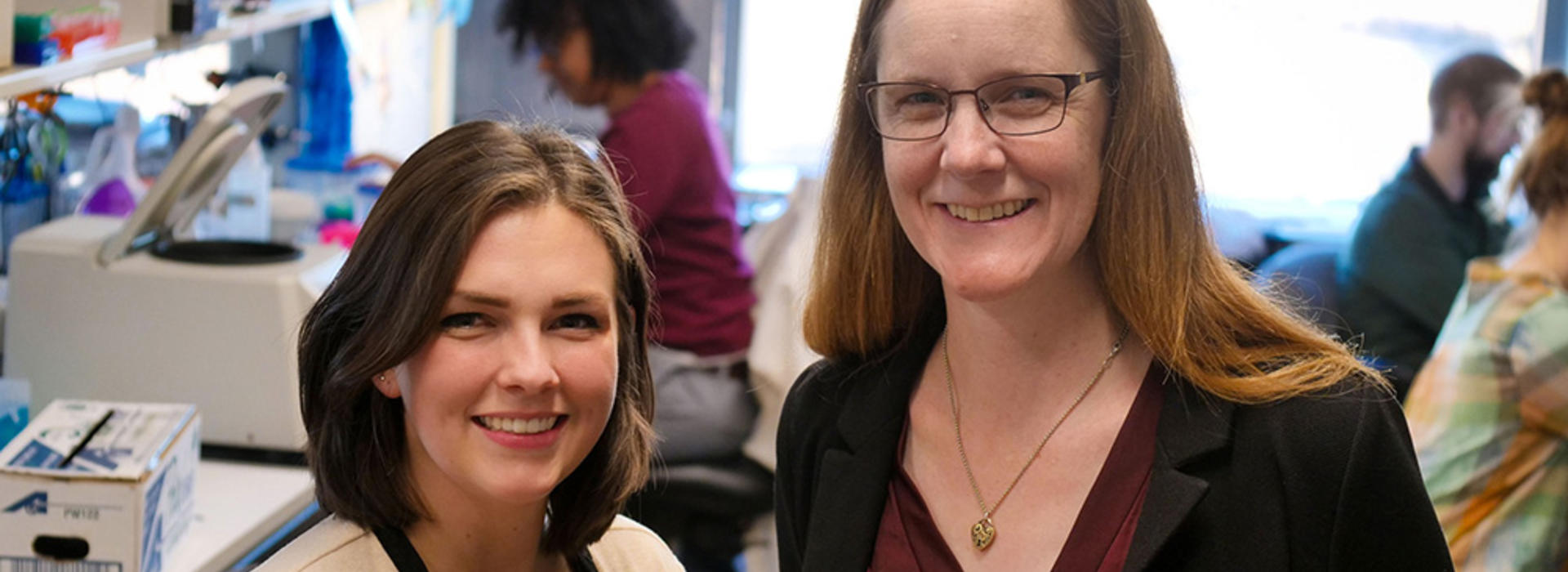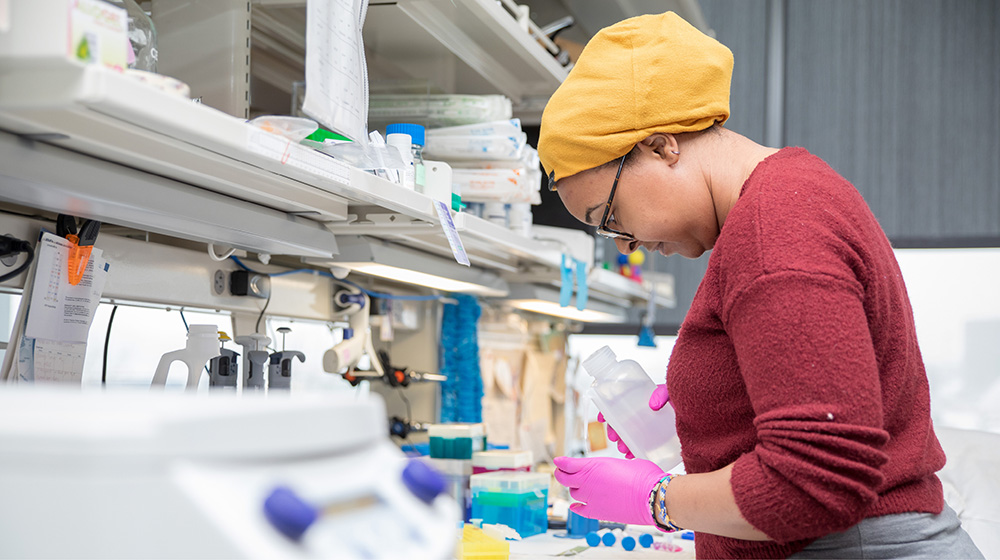
Graduate Students Help Lead Breast Cancer Treatment Research
Imagine you’re inside an escape room. Next to a locked door, you see a row of six levers. Your job is to pull the levers in the right order to open the door. But lever after lever, you pull the wrong combination, and what started as a fun game, eventually turns maddening.
That’s how Emily Jesser, a PhD student in the Microbiology, Immunology and Cancer Biology program at the University of Minnesota Medical School, describes the complexities of treating cancer in the clinic. Finding which levers work together or against one another has been a salient aspect of her research focus over the last four years in Kaylee Schwertfeger’s, PhD, laboratory.
“With every experiment, you learn something new,” Jesser said. “It can be frustrating at times, especially when I can’t quite wrap my head around an unexpected result, but I’m determined. I’m proud to be here and working on these types of projects.”
Jesser is one of three graduate students, a postdoctoral researcher and two technicians who work full-time in Dr. Schwertfeger’s laboratory, leading experiments to gain new knowledge with the potential to discover better treatments for breast cancer.
“The primary challenge with cancer research is that tumors are so complex that every time Emily performs an experiment, the results lead to us to ask 10 new questions,” said Dr. Schwertfeger, who is an associate professor in the Department of Laboratory Medicine and Pathology and a member of the Masonic Cancer Center and Center for Immunology. “It’s a never-ending process of constantly gaining knowledge. I couldn’t do this research without graduate students who work hard to develop new ideas to tackle these challenging problems.”
THE RESEARCH
Together, the research team hopes to eliminate the second-leading cause of cancer deaths in women—breast cancer. Although the majority of breast cancer patients respond positively to current standard therapies, there are subsets of patients that either don’t respond to initial treatments or recur following treatment and suffer from metastasis, which is when the cancer spreads to another part of the body.
“Those are patients for which there are still limited therapeutic options,” Dr. Schwertfeger said. “That’s generally what causes approximately 40,000 breast cancer patients to die every year. The primary tumor doesn’t cause death; the metastasis does.”
For patients that require another option, Dr. Schwertfeger, Jesser and the team have been studying a specific type of cell that lives inside a tumor’s “microenvironment,” which Dr. Schwertfeger says is very complex.
“You often think of tumors as lumps of tumor cells, but if a pathologist looks at a really thin section of a tumor through a microscope, it’s not just tumor cells in the lump. The tumors create this microenvironment where they recruit non-tumor cells, which can impact tumor growth and support the tumor with oxygen and nutrients,” she said.
It’s one of those non-tumor cell types recruited by tumors that may be the key in fighting breast cancer—the macrophage. This cell, also known as the “big eater,” consumes bacteria and other pathogens, and then instructs your immune system to send back-up.
“Macrophages are actually present in solid tumors like breast cancer, and one would hope that when they see a tumor cell, they would eat it,” Dr. Schwertfeger said. “The problem is, they don’t necessarily do that. But if they did and recognized a tumor as foreign, then they could tell the immune system to kill these tumor cells. That’s basically what we’re studying.”
THE EXPERIMENTS

To understand how the macrophage operates within a tumor microenvironment, Jesser conducts a variety of experiments that study the macrophages’ signaling pathways.
“What I’m looking at is the STAT5 transcription factor—proteins that are responsible for regulating genes—and how that transcription factor contributes to a macrophage’s function in the tumor microenvironment,” Jesser said.
She recreates those tumor microenvironments in culture dishes, and then studies how macrophages signal through STAT5. To do that, Jesser isolates RNA, which is a component of genetic material, to look for major transcriptional changes in tumor-associated macrophages that utilize STAT5. By comparing the results with macrophages that don’t signal through STAT5, she hopes to understand what STAT5 is necessary for in a macrophage’s function inside the tumor microenvironment.
Eventually, this cross-talk between the tumor cells and macrophages is what the team hopes to understand. That knowledge, Jesser says, will be the key in developing a new therapy to treat breast cancer and, possibly, others.
“Trying to find a universal drug just isn’t going to work, especially because everyone’s immune system responds differently and cancers are all different,” Jesser said. “But if you can train a person’s own immune system to recognize a tumor, that’s a better universal therapy.”